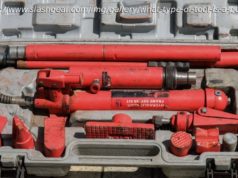Intel’s advanced 18A process powers next-gen Panther Lake and Clearwater Forest CPUs built for AI PC and data center performance.
Page 1: Intel Tech Tour 2025 Fab Tour Highlights And Diving Deep Into Panther LakePage 2: Additional Intel Panther Lake Details: Xe3 Graphics, NPU and IPU EnhancementsPage 3: Intel Clearwater Forest Deep Dive And Our Key Takeaways
We recently had the opportunity to attend Intel’s Tech Tour 2025 and dive deep into the company’s upcoming Panther Lake and Clearwater Forest CPU architectures. We also got the chance to tour Intel’s Ocotillo campus in Chandler, Arizona, which is the site of Fab 52 and Fab 62, where high-volume chip manufacturing using advanced Intel 18A process technology is being done. There was an abundance of data shared at ITT – too much to feature in a single article. Panther Lake and Clearwater Forest, however, will be the cornerstones of Intel’s consumer and data center offerings in the coming months and both of them are partially manufactured on Intel Foundry’s leading-edge 18A fabrication process, so we’re going to focus on those three things here.Intel 18A: Touring Intel’s Ocatillo Campus
We weren’t allowed to take any pictures and video during our fab tours on the Ocatillo campus, but wanted to spend some time trying to give you a sense of scale at this plant, and drive home the point that Intel is arguably manufacturing some of the world’s most advanced chips right here in the U.S. – TODAY.
Intel’s Ocatillo campus is situated on more than 700 acres of land and features a multitude of buildings and facilities. There are multiple wafer fabrication plants on-site, utility buildings that house chillers and boilers, and wastewater treatment plants, and a multitude of other buildings with everything from cafés to emergency generators. To read or hear news about Intel’s Ocatillo campus is one thing, but to experience in person is something entirely different. The Ocatillo campus is essentially a village or small city. It is huge.
The buildings are all intertwined and leverage shared systems that are critical to manufacturing chips of all types. The focus of our tour was 18A, so we donned our bunny suits, walked through a couple of advanced clean rooms and got to see the fab in action. Although the transistors manufactured on 18A are some of the smallest in the world, everything in the fab is big. Even the size of the ASML High-NA EUV lithography tools dwarf the older EUV tools. The size of the facility has to be seen first-hand to be appreciated.
At the scale Intel requires, the massive footprint and resource requirements of the Ocatillo campus are difficult to fathom. Intel has a webpage available detailing some of the power and water consumption details and other environmental considerations and if you check it out, you’ll see what I mean. But what’s equally interesting is that Intel has put in a ton of work to ensure the surrounding communities are minimally impacted. The campus generates millions of kilowatt-hours of electricity from solar panels, which it pumps out into the local grid as well. It’s also equipped with waste-water reclamation facilities, and only 4% of the waste generated actually makes it to the landfill.Exploring Panther Lake: CPU Architecture Deep Dive
At this point, if you follow the processor space at all, you’re probably well aware of what Intel’s Panther Lake is all about – we’ve been talking about it and posting leaks and other info, including numerous pictures of the chips, for well over a year. To summarize Intel’s official messaging on Panther Lake though, it’s an evolution of Lunar Lake that leverages Intel’s advanced 18A process technology, with more flexible memory configurations, designed to scale performance and efficiency across all its processing engines (CPU, NPU, IPU, GPU).
Домой
United States
USA — IT Inside Intel Tech Tour 2025: Panther Lake And Clearwater Forest Built On...






